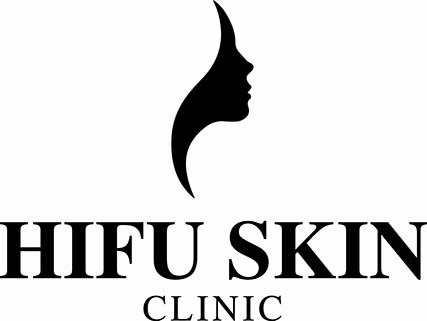Platelet rich plasma skin treatment also called Vampire Facial is very popular in our London aesthetic clinic. It is a newer, advanced skin rejuvenation treatment so we are answering some of the more common questions below.
Platelet Rich Plasma (PRP) is an easily accessible source of growth factors to support bone and soft tissue healing. It is derived by methods to concentrate autologous (from the same individual) platelets for the addition to surgical wounds or grafts and to other injuries in need of supported or accelerating healing.
I. BASIC BIOLOGY: Since 1990, medical science has recognized several components in the blood which are part of the natural healing process and if added to wounded tissues or surgical sites as a concentrate have the potential to accelerate healing. These specific components in the blood include platelet-derived growth factor (PDGF) and transforming growth factor-beta (TGFß), both of which are contained within the alpha granules of platelets, and fibronectin and vitronectin, which are cell adhesion molecules found in plasma, and fibrin itself.
Platelet Biology
| Peripheral blood smear. Scattered platelets correlating to a peripheral blood platelet count of 225,000 per ul |
| PRP smear. Dense platelet concentration correlating to a platelet count of 1,400,000 per ul in a 5 ml volume |
Platelets are living but terminal cytoplasmic portions of marrow megakaryocytes. They have no nucleus for replication and will die off in five to nine days. Prior to this understanding of their role in wound healing, they were only thought to contribute to the hemostatic process, where they adhere together to form a platelet plug in a severed vessel and actively extrude several initiators of the coagulation cascade. We now know that they also actively extrude the growth factors involved with initiating wound healing. These growth factors, also called “cytokines” are proteins each of about 25,000 Daltons molecular weight. They are stored in the alpha granules in platelets. In response to platelet to platelet aggregation or platelet to connective tissue contact, as occurs in injury or surgery, the cell membrane of the platelet is “activated” to release these alpha granules. The alpha granules release these growth factors via active extrusion through the cell membrane. Complete growth factors are not released by platelet disruption or fragmentation. Instead, these growth factors are actively extruded through the cell membrane where histones and carbohydrate side chains are added to complete their unique chemistries and make them “active” growth factors.
B. Platelet-Derived Growth Factor (PDGF)
Platelet-Derived Growth Factor is the evolutionary sentinel growth factor that initiates nearly all wound healing. It exists in three dimeric forms: PDGFaa, PDGFbb, and PDGFab. Each form is active but the specific role of each one has not been determined as yet.
Upon release in its active form, it attaches to a specific kinase receptor on a target cell. These receptors are transmembrane receptors. The PDGF occupation of their extra-membrane portion of the receptor site causes activations in the sub-membrane intracytoplasmic area. Specifically, this activation causes a high energy phosphate bond activation (kinase activation) of a signal protein bound to the cytoplasmic projection of the transmembrane receptor. When this signal protein is “activated” by the high energy phosphate it is also cleaved off the transmembrane receptor. The now activated signal protein floats within the cytoplasm and into the nucleus. Within the nucleus, this signal protein will trigger the expression of various genes.
Platelet-derived growth factors’ main functions are to stimulate cell replication (mitogenesis) of healing capable stem cells and what are also called pre-mitotic partially differentiated osteoprogenitor cells which are also part of the connective tissue-bone healing cellular composite. It also stimulates cell replication of endothelial cells. This will cause budding of new capillaries into the wound (angiogenesis), a fundamental part of all wound healing. In addition, PDGF seems to promote the migration of perivascular healing capable cells into a wound and to modulate the effects of other growth factors.
C. Transforming Growth Factor-beta (TGFß) The so-called “superfamily” of TGFßs numbers about forty-seven, and includes all of the well-published bone-specific morphogen growth factors of the 13 known Bone Morphogenic Proteins (BMPs). The type of TGFß found in platelets is TGFß1 and TGFß2, which are the more generic connective tissue growth factors involved with matrix formation (i.e. cartilage and bone matrix as well as vascular basal lamina matrix.)
Transforming growth factor-beta 1 and 2, also about 25,000 Daltons of molecular weight, are found in the alpha granules of platelets, and are actively extruded in response to the effects of tissue injury or surgery on platelets. Their mechanism of cellular stimulation through a transmembrane receptor, kinase activation of a signal protein, and that signal protein’s expression of various gene sequences is the same as that described for PDGF.
Cells which are activated by TGFß1 or TGFß2 include fibroblasts, endothelial cells, osteoprogenitor cells, chondroprogenitor cells, and mesenchymal stem cells. If a fibroblast is “activated” it will undergo cell division and produce collagen. An endothelial cell will be stimulated to produce new capillaries. An osteoprogenitor cell will further differentiate and produce bone matrix. A chondroprogenitor cells will further differentiate and produce the matrix for cartilage. A mesenchymal stem cell will be stimulated to mitose so as to provide the large population of wound healing cells needed for completion of healing.
D. Fibronectin and Vitronectin
Both of these are proteins called cell adhesion molecules. As part of cellular proliferation and migration particularly seen in bone and cartilage healing, cells move to new positions to lay down their products such as bone or cartilage. Related to the bone, this is termed osteoconduction. These cells move via a process of endocytosis in which they pinch in a portion of their cell membrane into vesicles at their tail end. These vessels are transported through the cytoplasm to their front end where they are re-incorporated into the cell membrane surface on the front end and therefore the cell moves in a creeping fashion. This movement must take place on a framework. If the framework has reversible binding sites on it or structures into which a cell membrane may invaginate, so much the better. Fibronectin and vitronectin also seem to be able to provide a foothold or grip for cells as they move. Whether this is through reversible binding to the cell membrane or its surface texture is unknown at this point.
Fibrin
Like fibronectin and vitronectin, fibrin is derived from plasma and contributes to cell mobility in the wound. The role of fibrin, which is a cross-linked protein derived from the fibrinogen in plasma, is not only to serve as a scaffold or surface for cell migration but to entrap platelets. As a cross-linked protein where the crosslinking occurs as part of the clotting process, it entraps platelets as well as red blood cells. This ensures a random distribution of platelets throughout the wound and therefore the growth factors they contain.
Through these recognized components in blood, natural wound healing is initiated, directed, and controlled. As a young science, blood component concentrates has not been completely studied. In fact, only a small percentage of the knowledge base is known today. Clinically, adding enriched platelets and plasma to various clinical systems has shown acceleration of bone graft healing and maturation of the graft, acceleration of skin graft healing and its maturation, and enhanced hemostasis in bone and soft tissue defects. The clinical applications of blood component concentrates sometimes referred to as Platelet Rich Plasma (PRP) will be discussed related to the medical and dental disciplines in which they have proven efficacy in the following sections.
Terminology: Platelet Rich Plasma (PRP): is the only scientifically correct term for a concentration of autologous platelets greater than the peripheral blood concentration suspended in a solution of autologous plasma. Other terms such as Platelet Concentrates (PC), Autologous Platelet Gel (APG), and Plasma Very Rich in Platelets (PVRP) have been applied to the same biologic material and although are not the correct terms, are acceptable for clinical usage.
Safety of PRP: Because it is autologous, PRP avoids the risk of transmissible diseases such as HIV, Hepatitis B, C, or D, and other bloodborne pathogens. Because it is used topically in and on top of a wound in a clotted fashion, it never re-enters the individual’s circulation. It is therefore safe when clot accelerators such as bovine thrombin are used or when PRP is added to other materials such as bovine collagen, gel foam, PLA-PGLA constructs, etc.
Q: Do these growth factors pose a risk for cancer?
A: No! They work on cell membranes, not the nucleus.
Q: Who long will a PRP membrane last?
A: About 5 to 7 days.
Q: How can I avoid disrupting the platelets?
A: 1. Overall gentle handling, 2. Use machines which create < 1700 g forces, 3. Large bore catheters for the blood draw, 4. Slow negative pressure during blood draw
Q: Is PRP effective in accelerating soft tissue healing?
A: Yes.
Q: Who are some of the more obvious patients for which PRP is recommended?
A: Advanced age, osteoporosis, radiated tissue, scarred tissue, diabetes, alcoholism, smokers, and other wound healing compromises.
Q: What is a measure of “Good” PRP?
A: 1. Platelet count greater than 1,000,000/ul in a 6 ml sample 2. Red tinge to final preparation
Q: Can I re-infuse the blood I do not use?
A: Absolutely not! It is not in your license to do so.
Q: Is bovine thrombin safe?
A: Yes.
Q: Will additional CaCl2/thrombin cause PRP to gel faster?
A: No! It will actually slow it down by diluting fibrinogen into a larger volume. Use ¼ ml or less.
Q: Will PRP promotes infections?
A: No.
Q: Can I add antibiotics into the PRP preparation?
A: No! It is actually contraindicated because its hypertonicity will disrupt platelet membranes.
Q: Can I use my own centrifuge?
A: No! It is not FDA approved and my fragment platelets.
Q: What are some of the most common clinical applications of PRP?
A: 1. Sinus Lift Grafting, 2. Ridge Augmentations, 3. Continuity Defects, 4. Skin Graft Donor Sites and Recipient Sites
Q: Can I use PRP with bone substitutes?
A: Yes, but there is no data to prove its efficacy.
Q: Will PRP resist or prevent infections?
A: No.
Q: What factors should I consider in an office PRP device.
A: 1. Platelet Recovery, 2. Platelet Viability, 3. FDA Approval, 4. Ease of Use, 5. Cost, 6. Service
Q: How long is PRP usable once processed in the anticoagulated state?
A: Eight hours.
Q: Can I spin two patients’ blood draws at the same time if properly labelled?
A: No. Absolutely not, any risk of blood product mislabeling is too much to accept.
Q: Can I use a EDTA as the anticoagulant?
A: No. It is untested and suspected to disrupt platelets.
Q: Does PRP promote wound hemostasis?
A: Yes, so does PPP.
Q: Is PRP indicated in everyone?
A: No! Only those that need acceleration or improvement in the healing process.
Q: Are higher platelet counts better?
A: Yes. Data is now emerging to indicate a near-linear dose-response relationship.
Q: Do I need to keep a PRP record like I do an anaesthesia record?
A: Yes – keep it in the patient’s chart.
Q: What are some of the differences between PRP and recombinant PDGFßß?
A: 1. PRP is a mixture of PDGFaa, PDGFßß, PDGFaß, TGFß1, and TGFß2, – Recombinant PDGFßß is a single growth factor, 2. PRP includes Fibrin, Fibronectin, and Vitronectin – Recombinant PDGFßß- does not, 3. PRP contains native and therefore complete growth factors in their natural ratios.
Q: How long before use should I mix the CaCl2 – Thrombin “Activator” solution?
A: Mix up fresh no more than 30 minutes prior to use.
Our Most Popular Aesthetic Treatments







